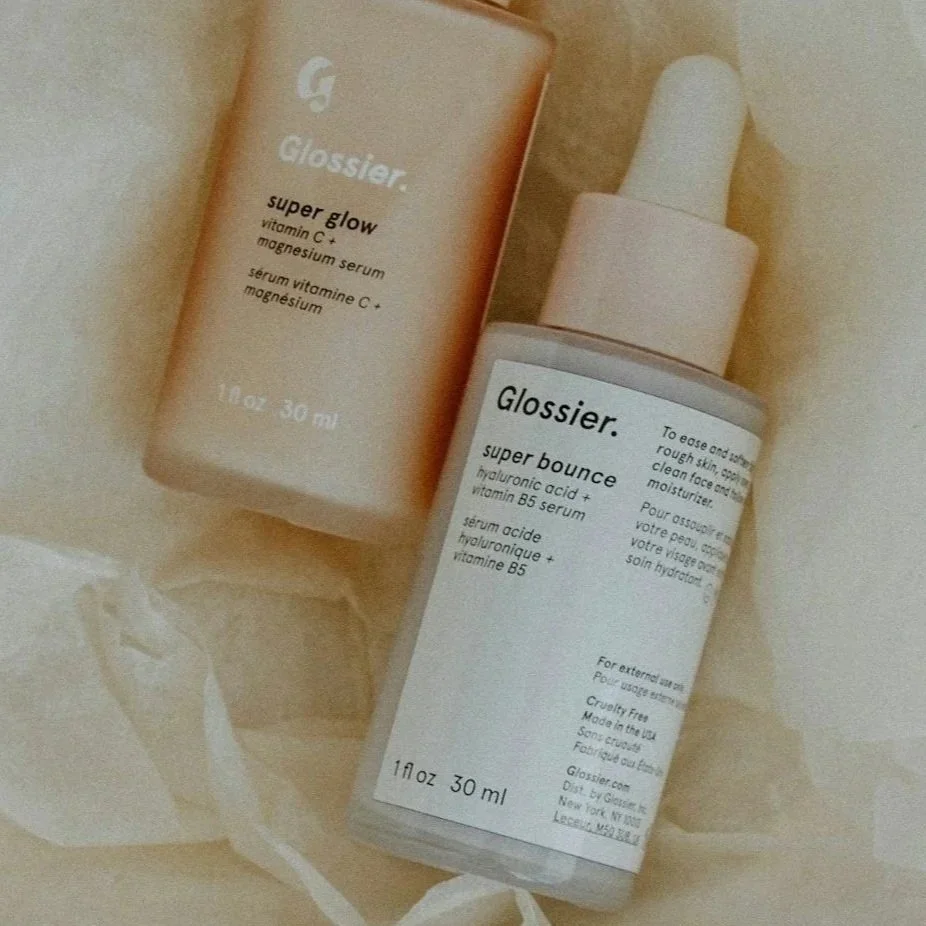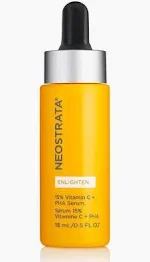The Complete Guide to Vitamin C: Which Form Works Best and How to Use It Right
If you've ever stood in the skincare aisle staring at dozens of vitamin C products, wondering why one costs £15 and another costs £150, you're not alone. Vitamin C might be the most talked-about ingredient in skincare, but it's also the most misunderstood. The truth is, not all vitamin C is created equal, and knowing which form to choose can make the difference between glowing skin and expensive disappointment.
By the end of this guide, you'll understand exactly which type of vitamin C will work best for your skin, why 15% is the magic number, and how to use it properly to get those coveted results.
Vitamin C explained at Glow Through Aesthetics
Meet the Vitamin C Family
Before we dive into the different forms, let's quickly cover why vitamin C deserves a place in your routine. This powerhouse antioxidant stimulates collagen production, brightens dark spots, protects against environmental damage, and gives your skin that healthy glow we're all after. But here's the catch – "vitamin C" on a label doesn't tell you the whole story.
Think of vitamin C like a family with different personalities. They're all related, but some are more stable, others penetrate better, and some are gentler on sensitive skin. Understanding these differences is key to choosing the right one for you.
The Main Players: Vitamin C Forms Decoded
L-Ascorbic Acid: The Gold Standard (But High Maintenance)
Neostrata Vit C is my go to!
This is pure vitamin C – the form your skin recognizes most readily and the one with the most research behind it. L-ascorbic acid is incredibly effective at stimulating collagen and brightening skin, but it comes with some challenges.
The downside? It's notoriously unstable, oxidizing when exposed to light, air, or heat (you'll know this has happened when your serum turns brown or yellow). It also needs to be formulated at a low pH (around 3.5) to be effective, which can cause irritation for sensitive skin types.
Best for: Those with resilient skin who want maximum potency and don't mind replacing products more frequently.
Magnesium Ascorbyl Phosphate (MAP): The Stable Starter
MAP is L-ascorbic acid bound to magnesium and phosphate, making it much more stable and less irritating. It's water-soluble and can be formulated at a skin-friendly pH, so it plays well with other ingredients.
The trade-off is effectiveness – while it converts to L-ascorbic acid in the skin, it's not as potent as the pure form. However, it's an excellent choice for vitamin C beginners or those with sensitive skin.
Best for: Sensitive skin, rosacea-prone skin, or vitamin C newcomers who want to build tolerance.
Sodium Ascorbyl Phosphate (SAP): The Acne Fighter
Similar to MAP but with sodium instead of magnesium, SAP is stable and gentle while offering some unique benefits. It has antimicrobial properties, making it particularly beneficial for acne-prone skin.
SAP is also less likely to cause the tingling or irritation associated with L-ascorbic acid, and it works well in water-based formulations.
Best for: Acne-prone skin, sensitive skin, or those who prefer water-based serums.
Ascorbyl Glucoside: The Slow and Steady Option
This form combines L-ascorbic acid with glucose, creating a stable, slow-release vitamin C. It's very gentle and gradually converts to active vitamin C in the skin, providing sustained benefits without irritation.
The gradual release means results may take longer to appear, but it's incredibly well-tolerated by all skin types.
Best for: Very sensitive skin, those prone to irritation, or anyone wanting gentle, long-term benefits.
Aminopropyl Ascorbyl Phosphate (APPS): The Penetration Champion
APPS is considered one of the most bioavailable forms of vitamin C. It's oil-soluble, which means it can penetrate deeper into the skin than water-soluble forms. It's also stable and less irritating than L-ascorbic acid.
This form is often found in higher-end formulations due to its superior penetration and stability profile.
Best for: Those wanting maximum penetration and bioavailability without the irritation of pure L-ascorbic acid.
The 15% Sweet Spot: Why More Isn't Always Better
Here's where things get interesting. While you might think higher percentages equal better results, research shows that 15% is actually the optimal concentration for most people. Here's why:
Absorption Curve Reality: Studies demonstrate that skin absorption of vitamin C plateaus around 15-20%. Beyond this point, you're not getting significantly better results – you're just paying more and potentially increasing irritation risk.
The Irritation Threshold: Most people can tolerate up to 15% without significant irritation, but higher concentrations often cause redness, stinging, and sensitivity, especially with L-ascorbic acid.
Cost-Effectiveness: The jump from 15% to 20% or 25% often comes with a significant price increase for minimal additional benefit.
Formulation Stability: Higher concentrations are often harder to stabilize, meaning your expensive 20% vitamin C might degrade faster than a well-formulated 15% version.
The exception? If you're using a gentler form like MAP or SAP, you might benefit from slightly higher concentrations (up to 20%) since these forms are less potent than L-ascorbic acid.
Bioavailability Champions: What Actually Gets Into Your Skin
Having vitamin C in your product is one thing – getting it into your skin effectively is another. Here's what affects bioavailability:
pH Matters: L-ascorbic acid needs a pH between 3.5-4 to penetrate effectively. If the pH is too high, it won't absorb properly. This is why some vitamin C products sting initially – that acidity is necessary for absorption.
Molecular Size: Smaller molecules penetrate better. This is why APPS and other ester forms often outperform larger, more stable versions in terms of actual delivery to skin cells.
Formulation Partners: Vitamin E and ferulic acid aren't just fancy additions – they enhance vitamin C stability and absorption. Look for products that combine these ingredients. Although quite an expensive options, Skinceuticals has a great line of Vitamin C products, and lead the market on research in the area.
Packaging Priorities: Dark glass bottles, airless pumps, or opaque tubes protect vitamin C from light and air exposure. Clear bottles might look pretty, but they're destroying your vitamin C before you even use it.
The most bioavailable forms, in order, are typically: L-ascorbic acid (when properly formulated) > APPS > MAP/SAP > Ascorbyl Glucoside.
Application Mastery: Timing and Technique
Morning is Best: Vitamin C's antioxidant properties make it ideal for morning use when your skin faces environmental stressors. It provides a protective shield against pollution and UV damage throughout the day.
The Perfect Layering Order:
Cleanse
Vitamin C serum (wait 10-15 minutes if using L-ascorbic acid)
Hydrating serum or essence
Moisturizer
SPF (non-negotiable!)
Application Technique: Apply to clean, dry skin. If using L-ascorbic acid, allow it to absorb fully before applying other products. The slight waiting period helps maintain the pH needed for optimal absorption. If targeting pigmentation, then apply to the pigmented heavy area only. I did this myself just on under the eyes and around the mouth. After three months, the results were wonderful!
Gradual Introduction: Start with every other day, then daily as your skin builds tolerance. Some tingling with L-ascorbic acid is normal initially, but persistent irritation means you should switch to a gentler form.
What NOT to Mix: Avoid using vitamin C with retinoids, benzoyl peroxide, or AHAs/BHAs in the same routine. These combinations can cause irritation or reduce effectiveness. Use vitamin C in the morning and these ingredients at night.
Troubleshooting Common Issues
"My serum turned brown/yellow": This is oxidation. Once vitamin C oxidizes, it's not just ineffective – it can actually be irritating. Time to replace it. To prevent this, store in a cool, dark place and always cap tightly.
"It stings when I apply it": Some tingling with L-ascorbic acid is normal, especially when you first start. However, if it burns, turns your skin red, or the stinging doesn't subside after a few minutes, switch to a gentler form like MAP or reduce frequency.
"I'm not seeing results": Give it time – vitamin C benefits accumulate over 6-12 weeks. Also, check your product's pH and packaging. A poorly formulated product might not be delivering effective vitamin C to your skin.
"It makes other products clump or doesn't layer well": This often happens with L-ascorbic acid serums due to their low pH. Allow full absorption before applying other products, or switch to a form that plays better with others, like MAP or ascorbyl glucoside.
Signs to Switch Forms:
Persistent irritation despite gradual introduction
Frequent product oxidation
Poor results after 3 months of consistent use
Difficulty incorporating into your existing routine
The Bottom Line
The best vitamin C for you depends on your skin type, tolerance level, and lifestyle. If you have resilient skin and want maximum potency, a well-formulated 15% L-ascorbic acid serum is your gold standard. If you have sensitive skin or are new to vitamin C, start with MAP or SAP. For those wanting cutting-edge bioavailability, APPS is worth the investment.
Remember, consistency trumps concentration. A 10% vitamin C serum used daily will give you better results than a 20% serum that sits unused because it irritates your skin.
The key is finding a form you'll actually use, from a brand that understands proper formulation and packaging. Your skin will thank you with that healthy, radiant glow that makes vitamin C such a skincare superstar.
Always patch test new vitamin C products and introduce them gradually. If you have specific skin concerns or conditions, consult with a skincare professional for personalized advice.





